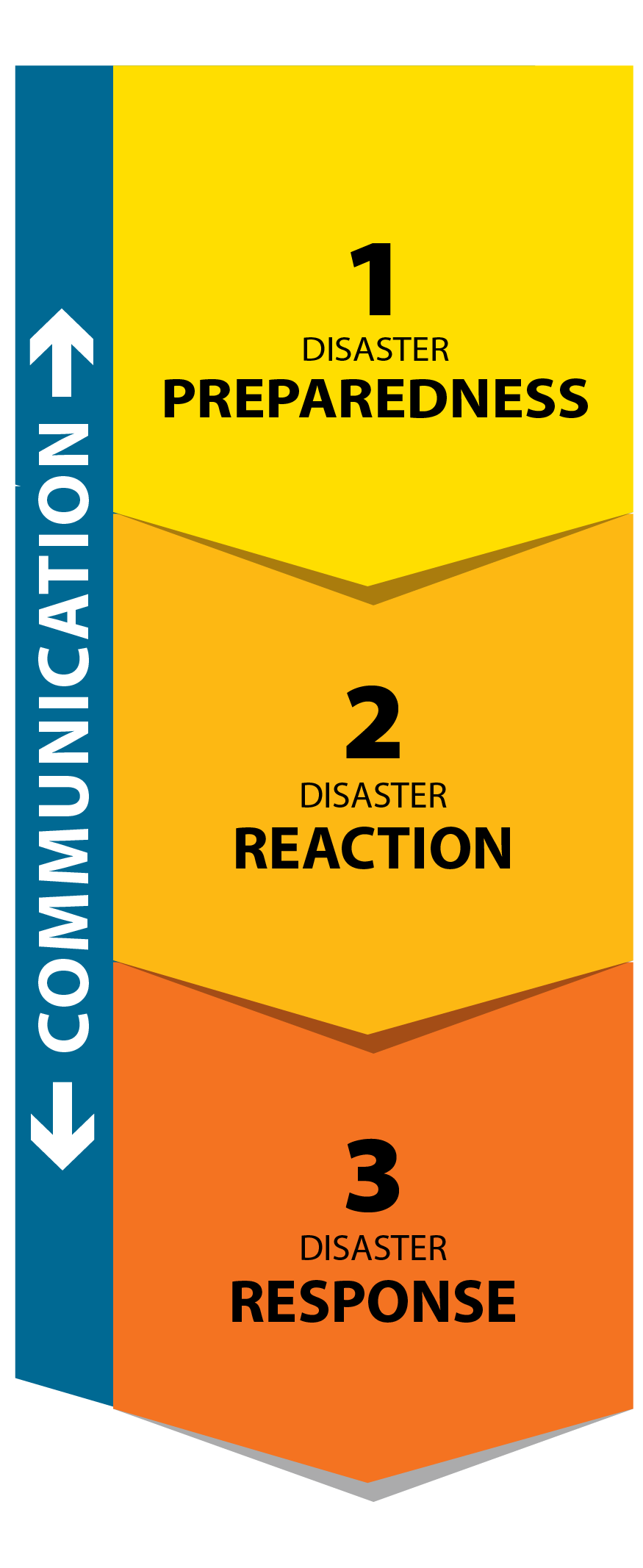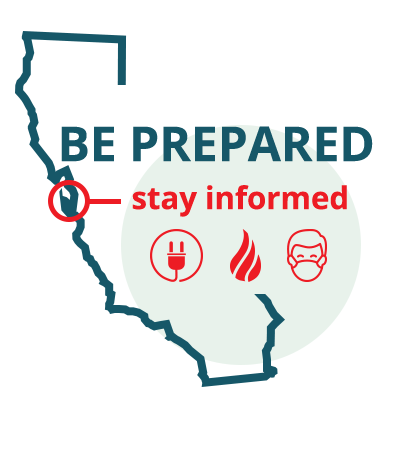Phases of Disaster Resource Management
There are three phases of Disaster Resource Management

- Disaster preparedness: Activities occurring prior to an event to ensure the organization is prepared for a disaster. This phase includes planning, risk assessment, training, testing, preventative maintenance, and systems backups.
- Disaster reaction: Activities occurring while the event is taking place to ensure the safety of employees, visitors, and vital information systems. This phase includes building evacuation, establishing a safe and secure environment, and information and life safety system shutdowns.
- Disaster response: Activities following a disaster that allow the health plan to continue or restore operations as soon as possible. This phase includes disaster recovery of information/technical systems, implementation of Emergency Preparedness and Response plans for the business areas, and restoration of life safety systems.
Effective communication is key during all phases
This plan must be reviewed and tested on an annual basis. Trainings and/or drills may be in the form of a table-top exercise, a physical walk-through, mock disaster, drills, or component testing to ensure emergency preparedness and to detect vulnerabilities that can be addressed before an actual emergency arises. HPSM will submit a report within 30 calendar days of each test to DHCS. The report will include an overview of the test, summary of outcomes and a plan to address vulnerabilities found. Additionally, upon request, HPSM will participate in mock disaster drills coordinated by governmental entities, if available, to ensure coordination during an emergency. A copy of this plan will be housed on the HPSM Intranet for all staff to access.
HPSM business units are responsible for the following:
- Periodically reviewing the adequacy and appropriateness of its plan and downtime procedures.
- Assessing the impact on the Emergency Preparedness and Response Plan of additions or changes to existing business functions, procedures, equipment, and facilities requirements.
In addition, HPSM will cooperate with local city and county emergency preparedness programs within our service area to ensure provision of health care services. Also, upon request, educate and prepare staff on the California State Emergency Plan and prepare staff to participate in California’s Standardized Emergency Management System (SEMS). HPSM will maintain contact information for local city and county emergency preparedness programs within our service area and a Medical Director and Grievance and Appeals Coordinator is currently signed up with California Health Alert Network and the California State Warning Center to receive communications.
